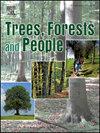埃塞俄比亚在收获和利用酸豆树果实方面面临的挑战
IF 2.7
Q1 FORESTRY
引用次数: 0
摘要
在亚洲和非洲的干旱和半干旱地区,俗称 "红枣 "的酸枣树是营养丰富且具有重要社会经济价值的水果的广泛来源。然而,人们对当地社区参与采摘和利用这些水果的了解仍然有限,从而影响了可持续采摘和更广泛的利用。本研究采用家庭访谈(HHIs)、焦点小组讨论(FGDs)和关键信息提供者访谈(KIIs)的方法,调查埃塞俄比亚不同树种枣树果实的采收和利用水平。利用多元线性回归和二元逻辑回归分别调查了影响每棵树每年果实产量的因素和影响当地社区种植和销售红枣能力的因素。研究发现,两个研究地点的每棵果树的产量、市场参与度和种植面临的主要挑战各不相同。博塞特地区的产量是巴蒂地区的 0.87 倍。妇女和儿童在水果采集、销售和管理方面发挥了重要作用。降雨量较少使每棵树的年产量减少了 33 公斤,而种植树苗而不是完全依靠自然生长的树木则使年产量增加了 42 公斤。受访者年龄每增加一岁,出售收获的枣果的可能性就会降低 0.04 倍。虫害、缺水和文化影响的影响越来越大,使社区对种植红枣的兴趣分别降低了 1.15 倍、1.41 倍和 2 倍。对红枣种植、果实收获和市场活动的参与度不高通常归因于社区支持不足、组织监管不力和市场价格低迷。这些发现突出表明,有必要加强对红枣果实的认识、管理和市场准入,以扩大埃塞俄比亚社区的利益。本文章由计算机程序翻译,如有差异,请以英文原文为准。
Challenges in harvesting and utilization of Ziziphus tree fruits in Ethiopia
Ziziphus tree species commonly known as “jujube” are wide sources of nutritious and socio-economically important fruits in arid and semi-arid regions of Asia and Africa. However, understanding of local communities’ engagement in harvesting and utilization of these fruits remains limited consequently undermining sustainable harvesting and broader utilization. Household interviews (HHIs), focus group discussions (FGDs) and key informants’ interviews (KIIs) were used to investigate the level of harvesting and utilization of fruits from different tree species of jujube in Ethiopia. Multiple linear and binary logistic regressions were utilized to investigate factors influencing the annual fruit yield per tree and to discern factors impacting the local community's capacity to grow and sell jujube, respectively. Fruit yield per tree, market involvement and the principal challenges to growing were found to vary among two study sites. Bosset district's yield exceeded Bati's by 0.87 times. Women and children played significant roles in fruit collection, sale and management. Less rainfall reduced annual yield by 33 kg per tree while planting seedlings instead of relying solely on naturally regenerated trees boosted yield by 42 kg per year. With each advancing year in age, older respondents were 0.04 times less likely to sell harvested jujube fruits. The increasing impact of pests, water shortage and cultural influences decreased community interest in growing jujube by factors of 1.15, 1.41 and 2 times, respectively. Suboptimal involvement in jujube cultivation, fruit harvest and market activities was frequently ascribed to inadequate community support, organizational oversight and depressed market prices. These findings highlight the need to enhance awareness, management and market access for jujube fruits to broaden community benefits in Ethiopia.
求助全文
通过发布文献求助,成功后即可免费获取论文全文。
去求助
来源期刊

Trees, Forests and People
Economics, Econometrics and Finance-Economics, Econometrics and Finance (miscellaneous)
CiteScore
4.30
自引率
7.40%
发文量
172
审稿时长
56 days
 求助内容:
求助内容: 应助结果提醒方式:
应助结果提醒方式:


